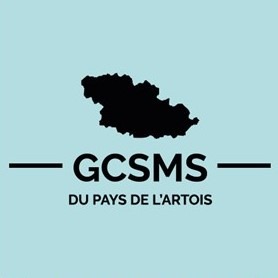Accueil » Pourquoi choisir artaban ? » Qui sommes-nous ? » Une association du GCSMS du Pays de l’Artois
Une association du GCSMS du Pays de l’Artois
artaban fait partie d’un groupement de Coopération Sociale et Médico-Sociale : le GCSMS du Pays de l’Artois

Le Groupement de Coopération Sociale et Medico-Sociale du Pays de l'Artois
En 2016, à l’initiative du CIASFPA, des professionnels du domaine médico-social se sont réunis afin de mieux se connaître et d’envisager la création d’une nouvelle forme de prise en charge et d’un réseau assurant aux usagers de meilleures prestations
Des partenaires sur tout le territoire
La logique de partenariat est de rapprocher des points de vue, des savoir-faire, des ressources, en vue d’actions communes. Cela implique une coopération des acteurs qui ont pourtant parfois des réponses différentes à des problématiques repérées par tous.
Le développement de la coopération est envisagé comme un des moyens de mise en œuvre d’action commune permettant de renforcer la cohérence des accompagnements des bénéficiaires en fonction de leurs besoins.
Tous nos professionnels sont diplômés en lien avec la réglementation.
Les autres structures du Groupement
Le CIASFPA Repas
L’association a pour objet de proposer différents services de la vie quotidienne. En direction des personnes autonomes ou en perte d’autonomie. Ceci afin de :
- apporter la prestation de services aux personnes et familles à leur domicile et en tout autre lieu, en leur apportant une aide dans la vie quotidienne, leur permettant ainsi de subvenir à leurs besoins notamment en matière de restauration,
- fournir des services d’assistance administrative en rapport avec les prestations accomplies par l’association (étude de dossier, aide à la gestion dans les commandes de repas à domicile),
- étudier et de mettre en place toute initiative visant un meilleur service aux bénéficiaires et leur famille
DOMI-SOINS 62/59
Les Services de Soins Infirmiers À Domicile (SSIAD) dispensent des soins infirmiers.
Né en 2013, le SSIAD DOMI-SOINS 62/59 contribue au maintien des personnes à leur domicile. Les interventions sont prises en charge par l’Assurance maladie et se font sur prescription médicale.
CSI (Centre de Santé Infirmier) du Dunkerquois
Nos Centres de Santé Infirmers (CSI) situés sur Grande-Synthe et Dunkerque, assurent, dans le respect du libre choix du patient, des activités de soins sans hébergement et participent à des actions de prévention, de diagnostic et de soins. Nos centres participent également à des actions de santé publique, d’éducation pour la santé du patient et des actions sociales.
Les CSI interviennent dans le secteur des soins ambulatoires. Ils constituent une aternative entre l’établissement de santé et les soins de ville.
Complémentaires des autres modes de prise en charge, les centres de soins infirmiers contribuent à la continuité des soins et la prise en charge globale des personnes soignées. Ils sont le maillon de la chaine du lien Ville-Hopital.
Ils participent à la politique de maintien à domicile des personnes âgées, dépendantes, en situation de handicap.
Résidences Services (Clos du Marais et Clos de la Brette)
Le Groupement de Coopération Sociale et Médico-sociale du pays de l’Artois dispose de deux résidences. L’une située sur la commune de Houdain, l’autre sur la commune de Rang-du-Fliers. Ces résidences possèdent plus de 30 logements chacune.
Ces résidences proposent la location d’appartement T1 ou T2, disposant d’un cadre agréable et paisible.
- Proche de toutes commodités, les résidences sont adaptées aux personnes à mobilité réduite et disposent de la présence d’un personnel 24h/24.
- Afin de vous accompagner au mieux, au-delà d’un équipement adapté pour plus de sécurité, des services d’aide et d’accompagnement quotidien peuvent être délivrés selon vos besoins…
- Les espaces communs (réfectoire, salon, terrasse, etc.) permettent de mettre en place des animations auxquelles vous pouvez participer selon vos envies. En dehors des temps d’animation, vous pourrez y retrouver les autres locataires pour échanger ou vous détendre.
La Halte Répit
La Halte Répit de la Gohelle, située sur la commune de Méricourt, propose un accueil pour les personnes âgées et en situation de handicap. Elles sont accueillies 5 jours sur 7, du lundi au vendredi, durant les après-midis.
L’association mets en place, grâce à l’animatrice et aux bénévoles présents, des animations, des sorties en extérieurs et des moments de détente en toute convivialité. Ces temps collectifs permettent aux personnes accueillies de rompre l’isolement du domicile, favorise leur inclusion et le développement du lien social.
Form3A
Form3A est un centre de formation à taille humaine, créé pour professionnaliser les acteurs du secteur sanitaire et social. Plus qu’un simple opérateur de formation, notre association structure ses interventions autour de 3 valeurs qui fondent son ADN :
Apprendre au sein de notre centre de formation c’est proposer :
- une expérience apprenante engageante et pragmatique
une équipe de formateurs pluridisciplinaire issue du terrain qui cultive chez chacun le désir d’apprendre
un appartement pédagogique conçu pour être projeté dans un environnement au plus proche du réel. - Aider l’entité à valoriser le parcours professionnel de ses collaborateurs en proposant l’accès à une formation qualifiante ou visant une montée en compétences sur une thématique ciblée.
- Accompagner votre réussite en vous connectant à notre réseau de partenaires.
Aussi, chez Form3A, l’équipe s’engage à vous offrir son expertise et sa passion du métier afin de toujours garantir la meilleure qualité de service auprès des personnes accompagnées.
